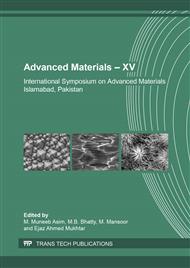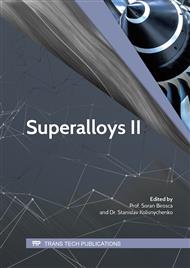[1]
S. Agashe, and H. Zhang, Selection of schedules based on heat balance in resistance spot welding. Weld. J. 82 (2003) 179-s-183-s.
Google Scholar
[2]
X. Sun, E.V. Stephens, R.W. Davies, M.A. Khaleel, and D.J. Spinella, Effects of fusion zone size on failure modes and static strength of aluminum resistance spot welds. Weld. J., 83 (2004) 308-s- 318-s.
DOI: 10.4271/2005-01-0906
Google Scholar
[3]
Y. Y. Zhao, Y. S. Zhang, and Pei-Chung Wang, Weld Formation Characteristics in Resistance Spot Welding of Ultra-Thin Steel. Weld. J., 96 (2017) 71s-82s.
Google Scholar
[4]
R.F. Nunes, B.L. Alia, R.L. Alley et al. Welding Brazing and Soldering, ASM Hand Book (soft version), ASM International, Materials Park, Ohio, volume-6 (1993) 684-672.
Google Scholar
[5]
P P Choughule, A K Biradar, A K Modi., Resistance Spot Weldability of Dissimilar Materials in 1 Mm Thick Sheet, J. Mech. Eng. Tech., 4 (2016) 15-21.
Google Scholar
[6]
Manoj Raut, Vishal Achwal., Optimization of Spot Welding Process Parameters for Maximum Tensile Strength, Int. J. Mech. Eng. Rob. Res., 3 (2014) 506-517.
Google Scholar
[7]
J. N. DuPont, J.C. Lippold, S. D. Kiser, Welding Metallurgy and Weldability of Ni base superalloys, John Wiley and Sons Inc, Hoboken, New Jersey, (2009).
DOI: 10.1002/9780470500262
Google Scholar
[8]
M.J. Donachie and S. Donachie, Superalloys a Technical Guide, 2nd edition, ASM Inter. Materials Park, Ohio, (2002), 8.
Google Scholar
[9]
Alejandro Hinojos, Jorge Mireles, Ashley Reichardt, Pedro Frigola, Peter Hosemann, Lawrence E. Murr, Ryan B.Wicker., Joining of Inconel 718 and 316 Stainless Steel using electron beam melting additive manufacturing technology, Mater. Desin., 94 (2016).
DOI: 10.1016/j.matdes.2016.01.041
Google Scholar
[10]
S. Aslanlar, The effect of button size on mechanical properties in electrical resistance spot welding of sheets used in automotive industry. Mater. Desig., 27 (2006) 125-s - 131-s.
DOI: 10.1016/j.matdes.2004.09.025
Google Scholar
[11]
M. Kimchi, Spot weld properties when welding with expulsion — A comparative study. Weld. J., 63 (1984) 58-s - 63-s.
Google Scholar
[12]
H. E. Emre And R. Kaçar., Resistance Spot Weldability of Deformed TRIP800 Steel, Weld. J., 95 (2016) 77s-85s.
Google Scholar



